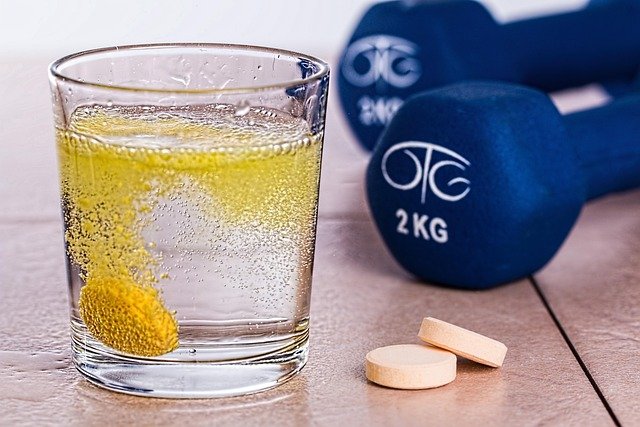Evidence-based routines for improving muscle tone and skin health
Practical, research-aligned routines can improve both muscle tone and skin quality by combining targeted exercise, nutrient-focused eating, adequate hydration, and consistent recovery strategies. This article outlines evidence-based approaches that integrate strength work, mobility, sleep, and skin-focused nutrition for balanced results.

Improving muscle tone and skin health together requires a holistic approach that addresses training stimulus, macronutrient balance, hydration, sleep, and targeted skin support. Evidence-based routines emphasize progressive resistance, adequate protein intake, structured recovery, and skin-specific nutrients like vitamin C and collagen precursors. Consistency over weeks to months yields measurable changes in muscle firmness and skin resilience; short bursts of activity or single interventions rarely produce lasting effects. This guide explains practical strategies you can combine to optimize both systems safely and sustainably.
How does nutrition and protein support muscle tone?
Protein supplies the amino acids needed for muscle repair and growth after resistance work. Aim for an intake distributed across meals—commonly around 1.2–2.0 g/kg body weight for those engaged in regular strength training, depending on goals and activity level. Prioritize whole-food sources such as lean meats, dairy, legumes, and soy, and time a larger protein portion near training to support muscle protein synthesis. Adequate overall energy intake is also essential; without sufficient calories, the body may not build or preserve lean tissue even with high protein.
Why is hydration important for skin and recovery?
Hydration influences both cellular function and physical recovery: properly hydrated tissues maintain elasticity and transport nutrients efficiently. For skin, water balance helps maintain barrier function and can reduce the appearance of fine lines when combined with topical care. Hydration also supports cardiovascular function and thermoregulation during exercise, which aids recovery. Simple strategies include regular fluid intake through water and electrolyte-containing beverages around longer or intense training sessions, and monitoring urine color as a practical hydration cue.
What role do resistance and cardio training play in strength?
Resistance training creates the mechanical stimulus that drives increases in muscle tone and strength, using progressive overload and adequate volume across compound and accessory movements. Typical plans include 2–4 resistance sessions per week, focusing on full-body or split routines depending on experience. Cardio supports metabolic health and body composition but should be balanced with resistance work to avoid excessive interference; moderate-intensity cardio and short high-intensity intervals can be included without hindering strength gains when scheduled appropriately and paired with sufficient recovery.
Can collagen and supplements aid skin health?
Collagen supplements provide amino acids that may support skin structure and can be paired with vitamin C to support collagen synthesis. Evidence suggests modest improvements in skin elasticity and hydration with consistent supplementation for several weeks, though results vary. Other supplements like omega-3s, vitamin D, and antioxidants support overall skin health and inflammation control. Supplements are adjuncts to a nutrient-rich diet; prioritize whole foods first and consult a healthcare professional for personalized advice and dosing.
How do sleep, mobility, and flexibility affect recovery?
Sleep is a critical window for tissue repair, hormonal regulation, and recovery; poor sleep impairs muscle protein synthesis and can increase catabolic signaling. Aim for consistent, sufficient sleep duration and quality. Mobility and flexibility work—through dynamic warm-ups, targeted stretching, and mobility drills—improve movement quality, reduce injury risk, and allow more effective strength training. Integrating short mobility sessions before or after workouts preserves range of motion and supports long-term training consistency.
How does posture influence strength and wellness?
Good posture optimizes muscle recruitment patterns, reducing compensatory strain and enhancing functional strength. Postural training combines strengthening of the posterior chain, scapular stabilizers, and core with mobility work for the hips and thoracic spine. Improved posture can enhance exercise performance and reduce aches that interfere with consistent training. Incorporate targeted exercises like rows, deadlifts, glute bridges, and thoracic rotations, performed with attention to form and progressive loading.
Balancing training load and recovery matters: schedule deload weeks, vary intensity, and listen to pain versus expected soreness. Skin-targeted habits—daily sun protection, gentle cleansing, and topical antioxidants—complement internal nutrition and hydration strategies. Track progress objectively with strength benchmarks and simple skin metrics like hydration, elasticity, or appearance over several weeks rather than expecting daily changes.
Conclusion A combined, evidence-based routine for muscle tone and skin health relies on consistent resistance training, adequate protein and overall nutrition, proper hydration, quality sleep, and mobility work, with selective use of supplements when appropriate. Small, sustainable adjustments applied consistently produce gradual, reliable improvements in muscle firmness and skin resilience over time.





